Ms. T. (42 years old, from Binh Dinh) came to the Nam Sai Gon International General Hospital (HCMC) for examination in a state of facial spasms that lasted for more than a year, causing the woman to become severely self-conscious.
Thought it was a "good omen" , but unexpectedly contracted a dangerous disease
Taking a medical history, Ms. T. initially only saw slight twitching under her eyelids, so she thought it was a normal condition. Relatives even thought it could be a "good omen" signaling upcoming luck according to folk beliefs, so Ms. T. became even more subjective.
But over time, the spasms spread from the eyelids to the entire eye area, down the cheeks and even to the orbicularis oris muscle. Although it did not cause physical pain, this condition occurred continuously, uncontrollably even when sleeping, causing her to gradually lose confidence, limit communication and have difficulty in daily activities.
Feelings of inferiority and anxiety gradually took over, causing her quality of life to seriously decline.
When arriving at the hospital, Ms. T. was examined by a doctor and ordered a magnetic resonance imaging (MRI) of the brain and cerebral blood vessels. The results showed that the patient's facial nerve VII (facial nerve) had an arterial loop compressing it, causing hemifacial spasms that had lasted for over a year.
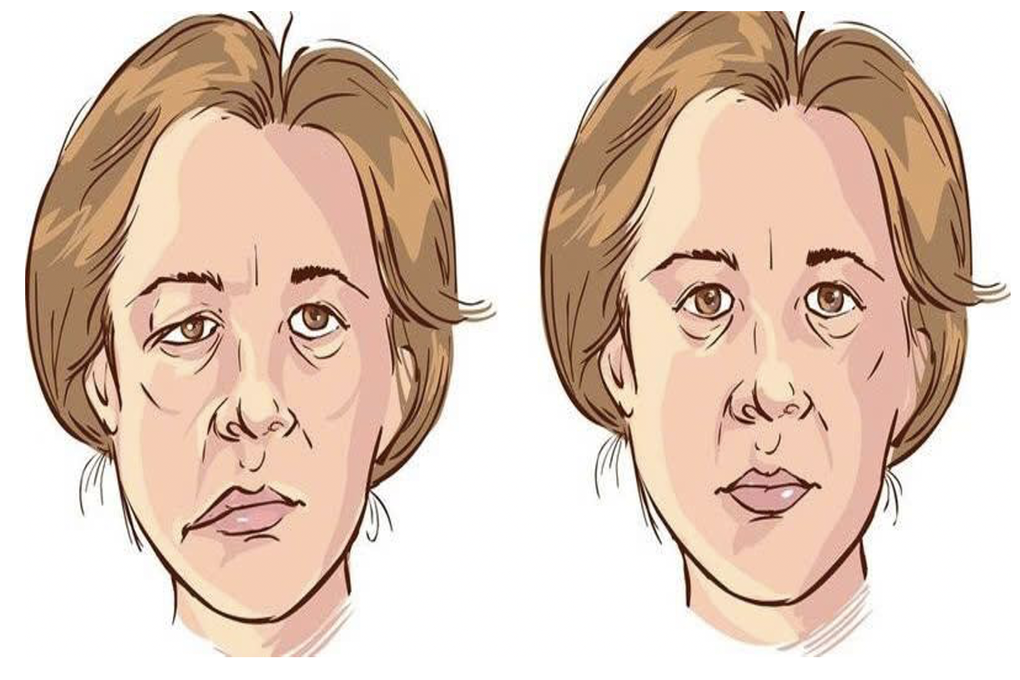
Facial spasm due to compression of the VII cranial nerve (left) and normal face (Illustration: Hospital).
MSc. Dr. Do Anh Vu, Department of Neurosurgery - Spine, Nam Sai Gon International General Hospital, said that this is a disease that needs early intervention, because if left for a long time, the seizures can gradually become more severe, causing facial deformities and other dangerous complications, affecting the patient's aesthetics and psychology.
More dangerously, in some cases, nerve compression for too long can lead to permanent facial paralysis.
Faced with that risk, Ms. T. and her family placed all their trust in the treatment plan of Nam Saigon International General Hospital.
The surgical team chose the endoscopic method of microvascular decompression, a modern technique that requires high precision, helping to directly treat the root cause of the disease by separating the compressed blood vessel from the nerve, while preserving the patient's facial nerve function.
Find back the smile lost for more than a year
The surgery lasted more than 1 hour and was directly performed by Master, Doctor, Specialist II Do Anh Vu and the team of the Anesthesia and Resuscitation Department. Through a 4cm skin incision and a small skull opening, the doctors approached the cerebellum and the arterial loop compressing the root of the seventh cranial nerve.
The team cleverly placed Teflon pads - a safe medical material that creates a permanent "insulating layer" between the blood vessels and nerves.
All operations are meticulously performed under a modern endoscopically assisted surgical microscope, helping the doctor to release compression while still preserving the surrounding important nerve structures.
This is the most stressful stage of the surgery, because even a small error in the operation can cause damage to the seventh cranial nerve, leading to facial weakness or paralysis after surgery.
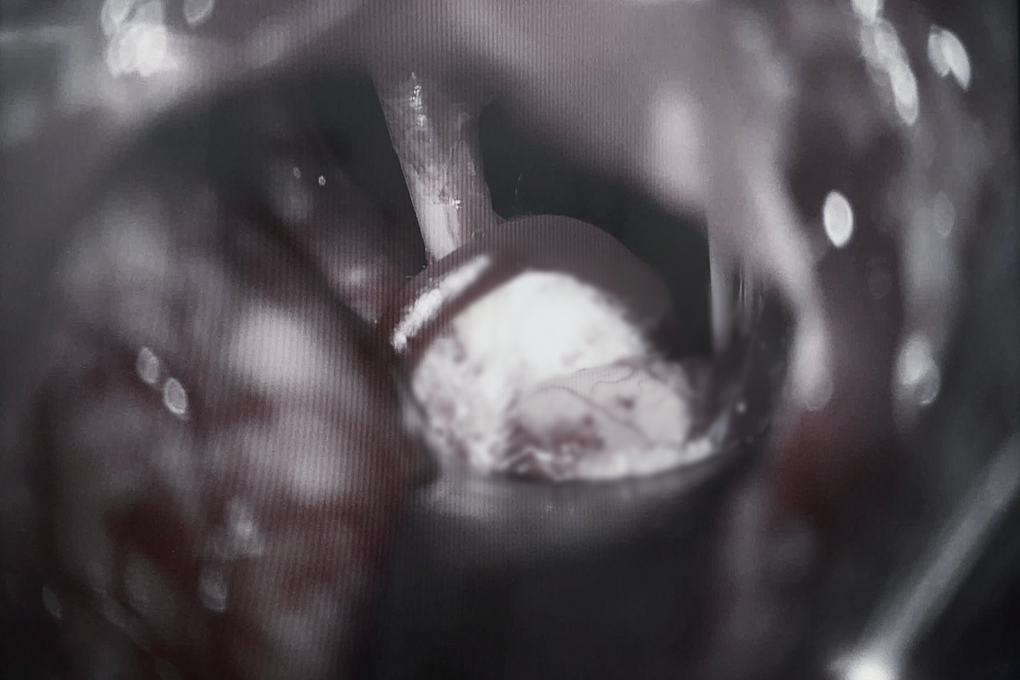
Teflon pads are carefully placed between blood vessels and nerves under a surgical microscope (Photo: BV).
Thanks to the experience of the entire team and the modern surgical microscope system, the surgery was safe and successful.
After the surgery, Ms. T.'s facial spasms completely disappeared, and her face returned to normal. The woman regained the bright smile she thought she had lost for over a year.
“I thought I would have to live with seizures for the rest of my life. The first day after surgery, when I looked in the mirror and saw my normal face, I felt an indescribable sense of relief. Thank you, doctors, for helping me find myself again,” Ms. T. emotionally shared.

The patient regained his smile after 1 day of surgery (Photo: Hospital).
Optimal treatment of hemifacial spasm
Dr. Vu shared that hemifacial spasm is a condition in which one side of the facial muscle twitches involuntarily, often starting from the eyelid and spreading to the cheek and mouth.
The disease is common in middle-aged people, does not cause physical pain but makes the patient stressed, lose confidence, greatly affecting the quality of life. The main cause is due to blood vessels compressing the root of the VII nerve at the pons.
Current diagnosis relies on clinical examination combined with MRI scans to accurately identify abnormal blood vessels causing compression. Once the disease is identified, medication, acupuncture or botox injections only have temporary effects and even have potential side effects.
Microvascular decompression surgery is considered the optimal method of modern medicine applied worldwide to treat the above condition, not only solving the root cause but also bringing sustainable results to patients.
Doctor Vu recommends that early examination, performing all necessary tests and listening to the treatment provider's advice are the keys to finding the most suitable solution to treat hemifacial paralysis.
At the Department of Neurosurgery - Spine, Nam Sai Gon International General Hospital, each surgery is a combination of deep expertise, modern equipment and dedicated enthusiasm, aiming to bring sustainable treatment results.
With the development of modern medicine, the journey to regain a smile has now become possible for many patients.
South Saigon International General Hospital
Address: 88 Street No. 8, Trung Son Residential Area, Binh Hung, HCMC.
Hotline: 1800.6767
Fanpage: https://www.facebook.com/BenhVienDaKhoaQuocTeNamSaiGon
Website: https://benhviennamsaigon.com/
Source: https://dantri.com.vn/suc-khoe/nguoi-phu-nu-mac-can-benh-nguy-hiem-suot-1-nam-nhung-lai-tuong-diem-lanh-20251103141944763.htm


![[Photo] Comrade Nguyen Duy Ngoc holds the position of Secretary of the Hanoi Party Committee](https://vphoto.vietnam.vn/thumb/1200x675/vietnam/resource/IMAGE/2025/11/04/1762234472658_a1-bnd-5518-8538-jpg.webp)
![[Photo] Ho Chi Minh City Youth Take Action for a Cleaner Environment](https://vphoto.vietnam.vn/thumb/1200x675/vietnam/resource/IMAGE/2025/11/04/1762233574890_550816358-1108586934787014-6430522970717297480-n-1-jpg.webp)

![[Photo] The road connecting Dong Nai with Ho Chi Minh City is still unfinished after 5 years of construction.](https://vphoto.vietnam.vn/thumb/1200x675/vietnam/resource/IMAGE/2025/11/04/1762241675985_ndo_br_dji-20251104104418-0635-d-resize-1295-jpg.webp)

![[Photo] Ca Mau "struggling" to cope with the highest tide of the year, forecast to exceed alert level 3](https://vphoto.vietnam.vn/thumb/1200x675/vietnam/resource/IMAGE/2025/11/04/1762235371445_ndo_br_trieu-cuong-2-6486-jpg.webp)
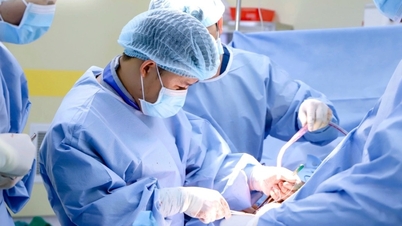

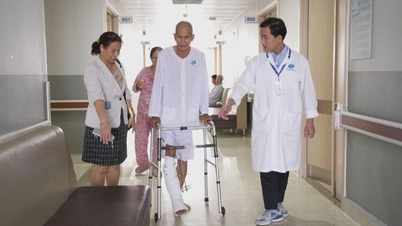




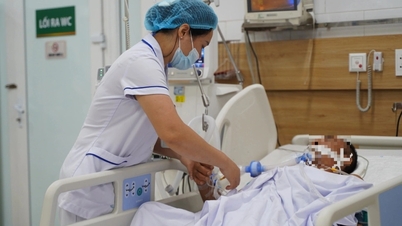











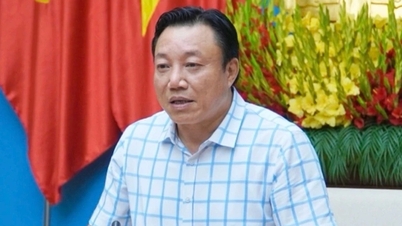




































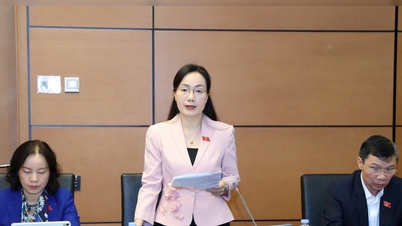





































Comment (0)